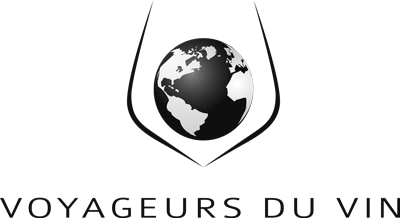The first wine-producing country in the world is also home to some of the most prestigious wine-growing regions like Bordeaux, Burgundy or Champagne.
History of Wine in France
France has a long wine history with the first vines planted by Greeks settlers in 600 B.C. During the Roman occupation, the vineyards were increasingly planted along the trade routes from Narbonne: along the Garonne river to Bordeaux and to the north in the Rhône Valley. The wine sector also settled down as far as Champagne and Loire Valley.
After the fall of Rome, the power of the Church enabled to develop the French viticulture. The monasteries had in their possession large vineyards in Loire, Burgundy and Champagne to produce Mass wine. During the Middle Age, the wine trade also increased. Bordeaux wines were already exported to England whereas Burgundy and Loire wines were sought-after in North Europa. The French vineyards carried on their expansion until the nineteenth century.
The appropriation of Church lands during the French Revolution turned upside down the map of some of the biggest wine regions like Burgundy that is now divided in a high number of small parcels. During the nineteenth century, Bordeaux enjoyed an extraordinary prosperous period thanks to its trade activity. Therefore, the region saw the construction of a high number of châteaux that led to the rising reputation of the wine estates and the setup of its own classification system in 1855.
But the golden period came to an end in the middle of the nineteenth century with the emergence of three diseases from North America: mildew, powdery mildew and phylloxera which entirely destroyed the vineyards. Moreover, the wine sector experienced a strong economic decline cause by the two World Wars. French viticulture was full of mediocre table wines coming mostly from Languedoc-Roussillon.
To avoid losing irremediably the quality and authenticity of the French wine, the country created its appellation system during the 1930's. However, the revival of the wine sector happened during the 1960-1970 thanks to the influx of new investments to produce high quality wines.
A diversity of landscapes and terroirs
France enjoys a wide range of climates and topographies. The important wine regions are inside three distinct climatic areas. The southern French regions and the southern Rhône Valley have a Mediterranean climate. The Atlantic Ocean has a great influence on the Loire Valley, Bordeaux and South West regions. Champagne, Alsace, Burgundy and northern Rhône Valley have a more continental climate.
France can produce a wide array of diverse wine styles thanks to its culture of terroir. The tradition is that the wine has to reflect the characteristics of the soil, climate and relief of the vineyard. Therefore, the accent on terroir explains France's capability to make a high number of distinct wines.
France wine sector is still widely dominated by the prestigious Bordeaux and Burgundy still wines and Champagne. However, France has many typical wine regions like German style's white wines in Alsace, mineral and vegetal Loire white wines, the specialities in the appellations of the Northen Rhone Valley and Southern Rhône with Châteauneuf-du-Pape, Condrieu, Hermitage or Côte-Rotie. Languedoc-Roussillon has a booming wine sector thanks to propagation of high quality wines' appellations. To a lesser extent, Provence and South West's wine production experience a rising development.
The main grape varieties in France
The major international varieties are all from France: Syrah, Cabernet Sauvignon, Merlot, Pinot Noir, Chardonnay, Sauvignon Blanc, Semillon and Riesling. The French grape varieties' prominence shows France domination with Burgundy and Bordeaux on the international wine business.
Cabernet Sauvignon, Merlot and Cabernet Franc are often blended together to make full-bodied high quality red wines. The three varieties are used to make varietal wines like Loire wines of Cabernet Franc.
Pinot Noir is the great Burgundy variety that is used to produce fruity fresh red wines. It is also found in blend sparkling wines of Champagne.
Syrah is the only authorized red variety of Rhône Valley's northern appellations. The wines have spicy fruity flavors. The grape is also used in the great blend wines of Southern Rhône Valley and Languedoc-Roussillon. However, in the southern French wine regions the dominant grape is Grenache. Only growing in the South, Mourvèdre makes a spicy powerful red wine.
Chardonnay is the most common white variety. It shines brightly in Burgundy where it reveals its best characteristics inside diverse wine styles. It is also used to make champagnes.
Sauvignon Blanc grows in the cool regions like Loire and Bordeaux where it can produces a crisp and acid white wine. The other dominant white variety in the Loire Valley is Chenin Blanc.
The white wines from Alsace are made of several noble grapes like Riesling, Gewurztraminer or Pinot Gris.
